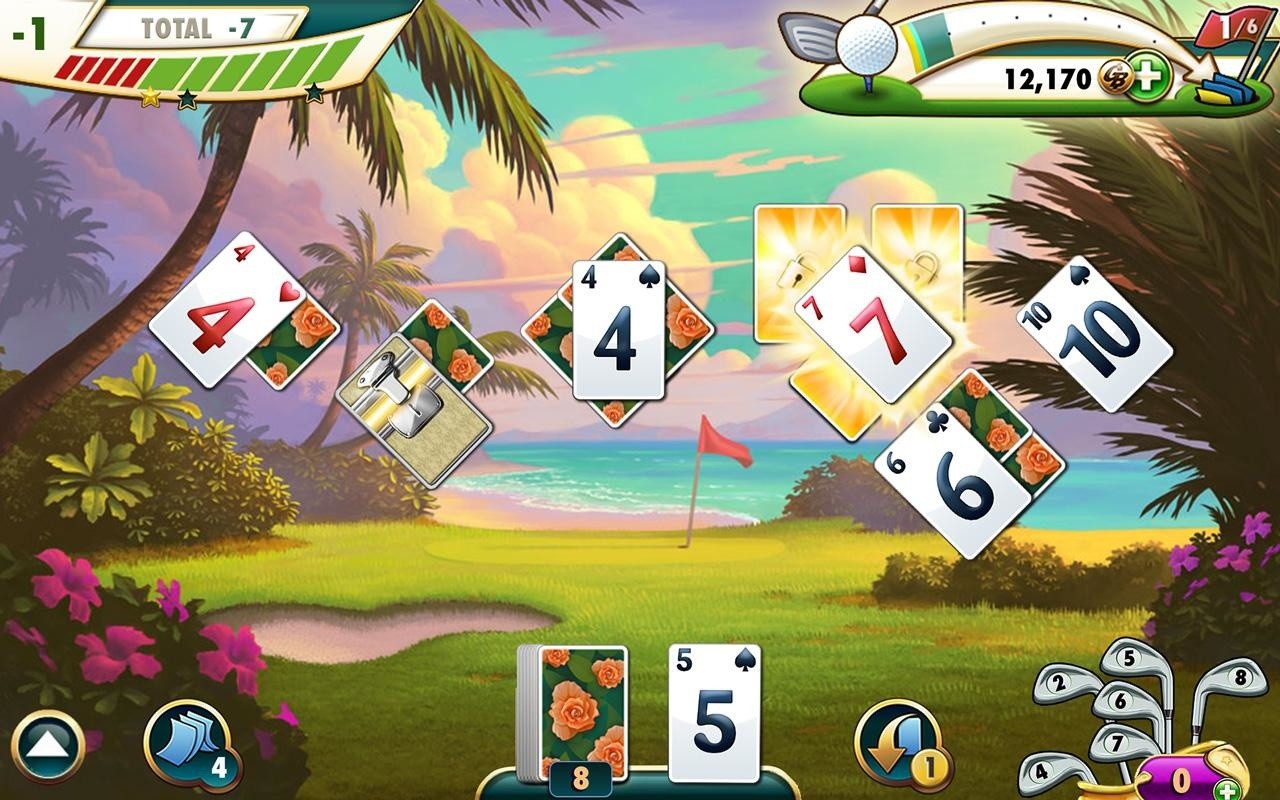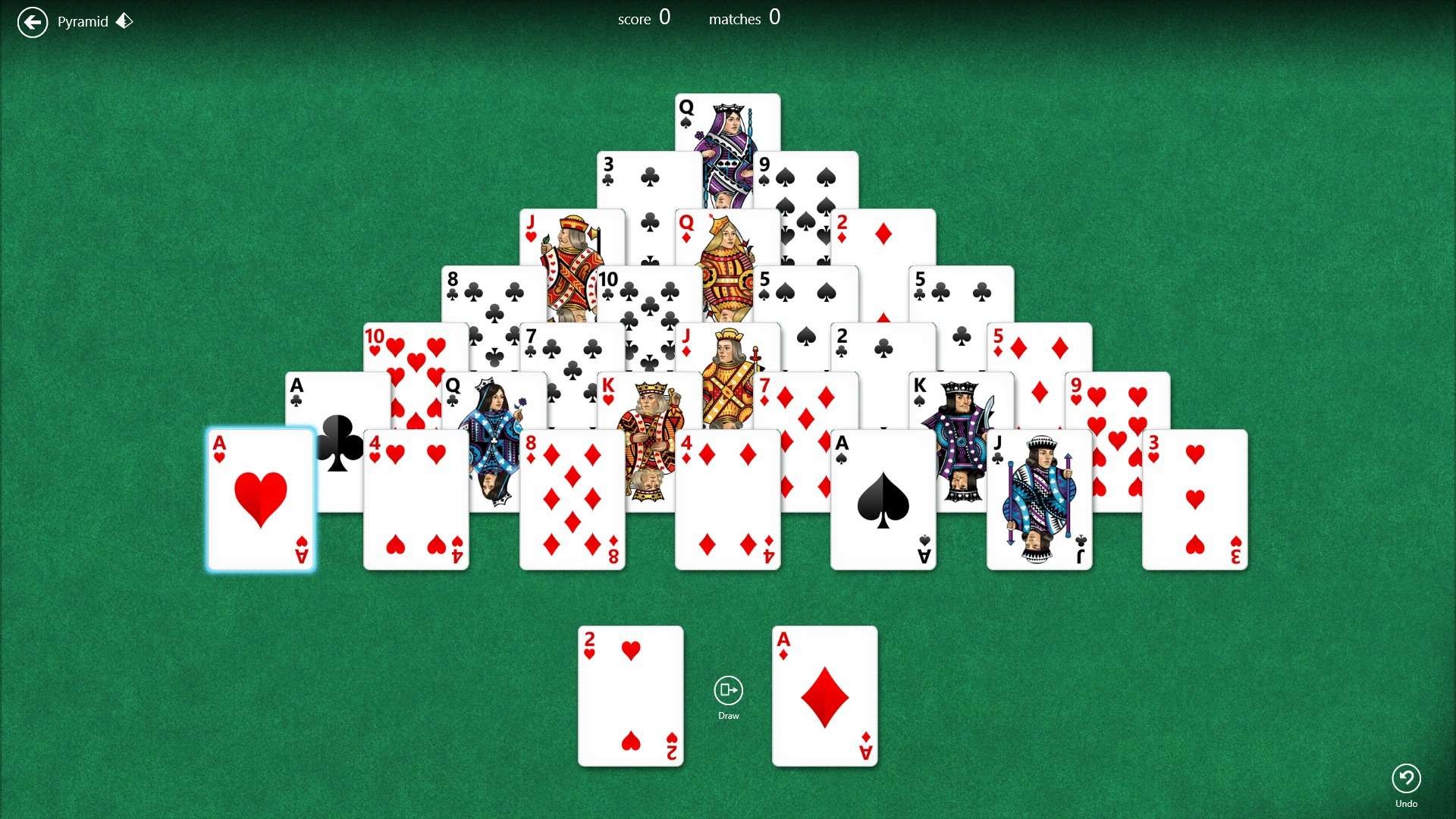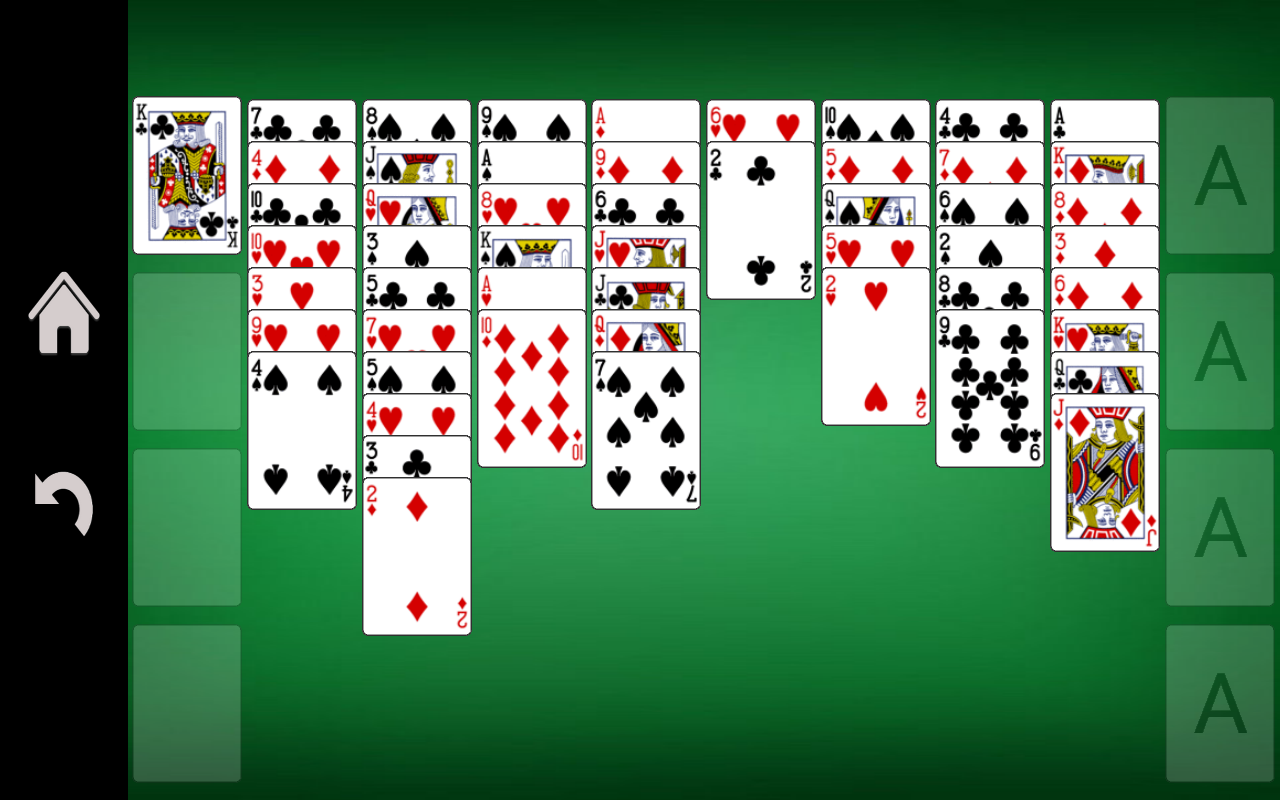


The fact that the card is underneath another card means the card is blocked for play. The cards are dealt in the row so that the card underneath will be visible (10-15% of the card, so when the card underneath has been previously exposed or played, and you have built upon it with another card, you can see the Suit of the card. For example, the Tableau of the Vegas Solitaire setup is dealt over seven rows. When cards are dealt next to each other, we call it a row. To complete a game, you must reveal all the cards and play them in sequences to the Foundation. These so-called face-up cards are now available to play. The Tableau is the playing field from where you have to move cards to expose new cards. The Solitaire layout always consists of, among other things, a Tableau. Not all forms of Solitaire use Foundations, but when they do, the Foundation is the place where you need to build your cards based on sequences and suits as indicated by the rules of the particular game. Here you need to build your entire deck of cards in order to complete the Solitaire. The Foundation often consists of 4 columns pre-marked on the layout. Also, “column” is often used interchangeably with a row, and the same rules apply. ColumnĪn empty place is often indicated by an outline to show where the card should be placed. Having two re-deals means you can go through the Stockpile 3 times in total. Depending on what rules apply, re-deals are often none, two, or unlimited. When you have gone through all cards of the Stockpile, in some cases, you are allowed to go through the pile again.
#Solitaire set up free
When you play the top card, the second will be exposed and free to play. With this rule, you are only allowed to play the top card of the three. When this rule applies, it means that when you turn a card from Stockpile to Waste Pile, it goes by three cards at a time. When this rule applies, you turn a card from Stockpile to Waste Pile one at a time. In case you turn three, only the top (exposed) card (from the Waste Pile) can be brought into play. Depending on the rules, you must turn 1 or 3 cards simultaneously. This is a pre-marked space on the layout.

When you turn your card over from the Stockpile, you expose the top card and place it face-up onto the Waste Pile. These cards are available to turn over to the Waste Pile to bring into play. The deck of cards left over from dealing the layout. To understand the various diagrams it’s important to know what word means that are used to point out the various elements of the Solitaire setup. Solitaire Terms and Glossary relating to the setup
#Solitaire set up how to
For more information about the rules, we advise you to read our article with the basic info on Solitaire Rules, where you learn how to play Solitaire step-by-step. You can only move cards based on specific rules these vary between games of Solitaire. When a player manages to take all cards from the layout (also called the Tableau), the player wins or completes the game. Introducing Solitaire: How to set up a game of Solitaireīefore we go over the different Solitaire setups, it’s essential to know the object in most Solitaire games: complete the layout and play all cards to a particular “end location,” often called the Foundation.


 0 kommentar(er)
0 kommentar(er)
